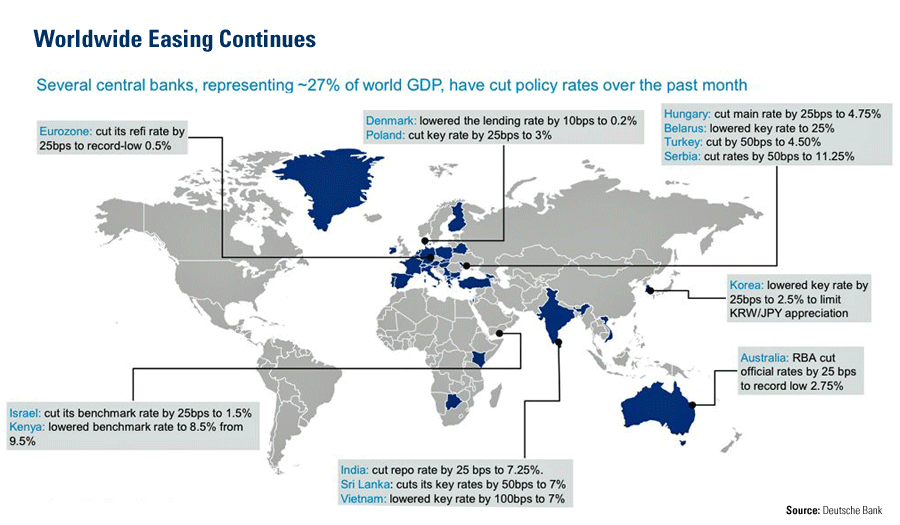Gold Tax May Reduce Record Gains For Gold Investors
Post on: 9 Июнь, 2015 No Comment

While prices have risen to record highs for gold, tax regulations could take a significant bite out of those profits. Since some gold investments are considered collectibles, rather than capital assets, by the US tax code, the implications for investors in gold can be surprising. See the following article from Money Morning for more on this.
Millions of investors who bought gold in the last 12 months are undoubtedly very happy at the moment considering that the yellow metal has risen 60% since last November to a recent close of $1,138.60 an ounce on Monday.
But chances are good that many wont be smiling when they discover just what the taxman has planned for their gains.
Unbeknownst to most investors, gold is considered a collectible not a capital asset. In plain English, this means that despite the fact that many people believe they are investing in gold, the Internal Revenue Service (IRS) believes that they are collecting it.
This is no small distinction and hurts investors because it means that gold does not qualify for the 15% maximum tax bite that most of us employ as a matter of routine when we mentally calculate profits earned on investments held for more than a year. That 15% cut for Uncle Sam is the long-term capital gains tax rate that applies to most stock or mutual fund investments.
Precious metals are a completely different story. Profits from these investments can be subject to a 28% maximum tax rate if held for more than 12 months. And if they are sold in less than a year, the profits count as ordinary income.
The long and the short of it is that as a result of golds spectacular run-up, many investors may have a tax problem they havent counted on when they go to sell, said Gary E. Ham Jr. of the Oregon-based accounting firm of Jones & Ham PC
This may be especially true for investors who have piled into such asset-backed, exchange-traded funds (ETFs) as the SPDR Gold Trust (NYSE: GLD), the iShares Silver Trust (NYSE: SLV) and the iShares COMEX Gold Trust (NYSE: IAU), for example, because precious-metals ETFs are set up as something called a grantor trust. According to Barrons, ETF investors are treated as owning undivided interests in the actual metal thats owned by the fund. Therefore, when an investor sells shares in the ETF, the tax code treats that investor as having sold a share of the metal backing the fund.
Adding insult to injury, if the ETF sells some of its hard assets to pay expenses or management fees as many have done recently, the resultant gains (or losses) flow directly through to investors and shareholders even if those investors dont receive any distribution or cash whatsoever.
And the net results can be mighty startling. For example, Doug Fabian, president of Fabian Wealth Strategies, a California-based investment advisor, noted several painful examples in an article on his firms Web site about the tax traps of commodity ETFs, including:
- An investor who experienced a trading loss of $741 in the United States Oil Fund LP (NYSE: USO) with no interest received but a K-1 tax form reporting a taxable profit of $9,136 and interest of $210.
- Another who had actual trading profits in the United States Natural Gas Fund LP (NYSE: UNG) of $1,900, with no interest received, and a K-1 reporting taxable profits of $4,319 and $120 in interest.
- An investor who had an enviable trading profit of $4,335 in the PowerShares DB Agriculture (NYSE: DBA), without receiving any interest activity that triggered a K-1 form that reported profits of $6,963 and interest of $207.
- Finally, an investor who notched trading profits of $337 and no interest in the PowerShares DB Commodity Index Tracking Fund (NYSE: DBC) triggered a K-1 listing profits of $3,406 and interest of $195.
K-1s, in case you are not familiar with them, are tax forms used by partnerships, corporations and ETFs to report a partner or a shareholders share of distributed profits and income. If you own one of the ETFs Ive just mentioned, chances are youll be getting one just after the New Year to file with your taxes.
Heres how this works.
Because the XYZ ETF does not pay income taxes itself, its profits are passed through to the actual owners in this case, the shareholders, who must claim those profits as their own. If you own 50% of XYZ ETF, and XYZ files for a $100,000 profit in 2009, youll receive a K-1 for 50% of the net profits or $50,000 which you then will have to claim on your personal 2009 income-tax return.
By the way, conventional gold and metals stocks gold producers are a good potential example of what we mean are treated normally, so investors who have chosen to buy these more-traditional investment vehicles will escape these unexpected tax consequences.
If there is a moral to the story, its that nothing is what it seems anymore not even gold.
This article has been republished from Money Morning. You can also view this article at Money Morning, an investment news and analysis site .














